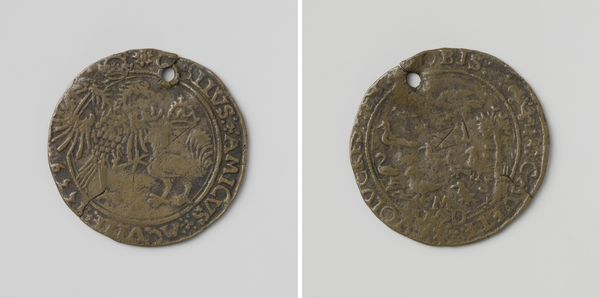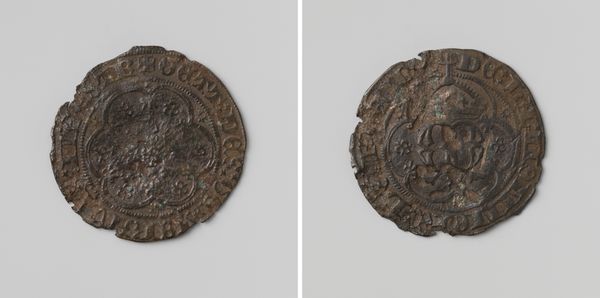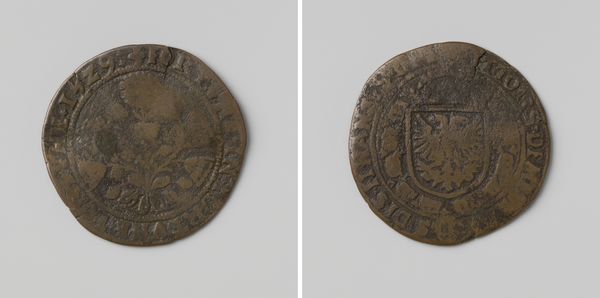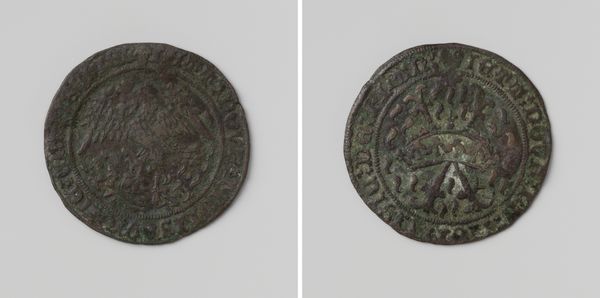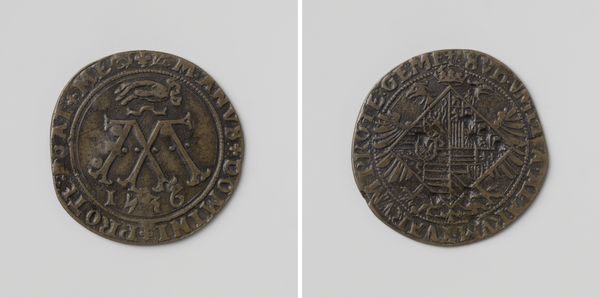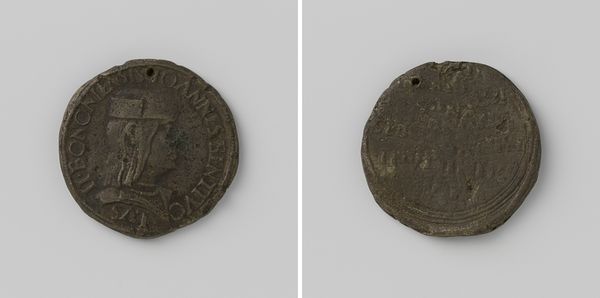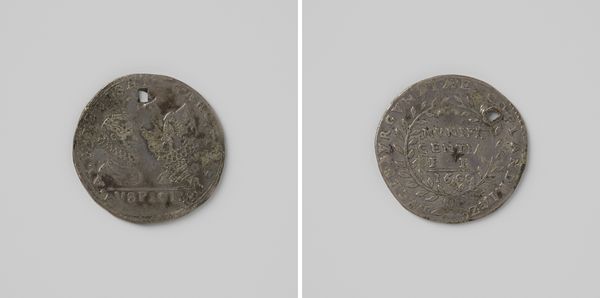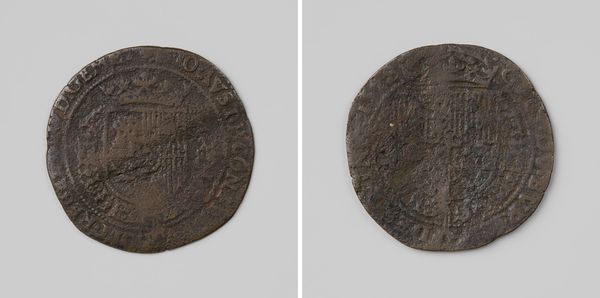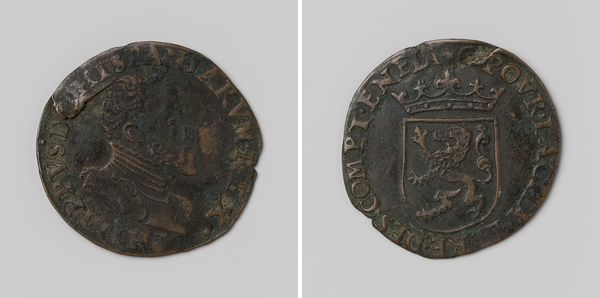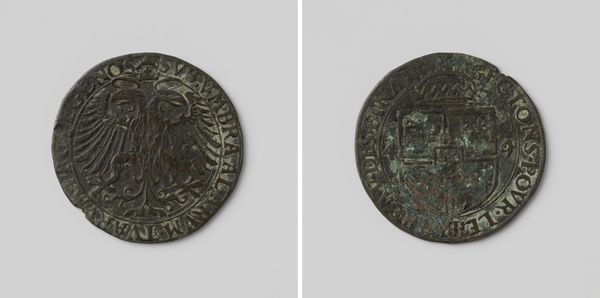
Milaan op de Fransen veroverd en de geboorte van Filips, zoon van Karel V, rekenpenning geslagen op last van Margaretha van Oostenrijk, landvoogdes der Nederlanden 1527
0:00
0:00
metal, intaglio, relief, sculpture
#
portrait
#
medieval
#
metal
#
intaglio
#
sculpture
#
relief
#
11_renaissance
#
sculpture
Dimensions: diameter 2.9 cm, weight 3.86 gr
Copyright: Rijks Museum: Open Domain
Curator: Here we have a remarkable object from the Rijksmuseum collection: a metalwork intaglio from 1527. It's a commemorative coin, commissioned by Margaret of Austria, marking the conquest of Milan and the birth of Philip, son of Charles V. The full title reads: “Milaan op de Fransen veroverd en de geboorte van Filips, zoon van Karel V, rekenpenning geslagen op last van Margaretha van Oostenrijk, landvoogdes der Nederlanden.” Editor: It’s a powerful piece, even in its aged condition. There's something inherently fascinating about how political narratives and personal legacy were so deliberately intertwined, even monumentalized on a tiny little coin such as this one. Curator: Absolutely. These weren’t just transactions; they were powerful symbols circulating within a specific social sphere. Margaret of Austria used these medals, and objects like them, to affirm and disseminate power throughout the region. Editor: I’m particularly struck by the imagery—on one side, an eagle dominates, almost predatory in its posture. Is this about demonstrating dominance, or something more subtle? Curator: Definitely dominance. The eagle, symbol of the Holy Roman Empire, embodies that ambition. The coin itself signifies more than a conquest. It communicates divine favor, dynastic continuation, solidifying power through the image of the newborn Philip. It projects an aura of stability after military achievement. Editor: And considering the gender politics of the era, commissioning this piece as a woman in a position of authority lends the piece a completely other dimension. Curator: Precisely. It shows us agency, especially for elite women using objects like these coins. Margaret strategically deploys imagery to solidify Habsburg authority. Editor: These coins offer not only visual communication but physical authority too. Even something as humble as the material communicates about power, economics and value. It all gives pause, especially concerning the use of birth as a symbolic claim on territories and identities. Curator: Reflecting on this piece, it underlines how visual and material culture functioned as potent political instruments, negotiating power, succession, and legitimacy in Early Modern Europe. Editor: And reminds us that those visual-political strategies continue to inform how identities, power and legitimacy get negotiated today.
Comments
No comments
Be the first to comment and join the conversation on the ultimate creative platform.


